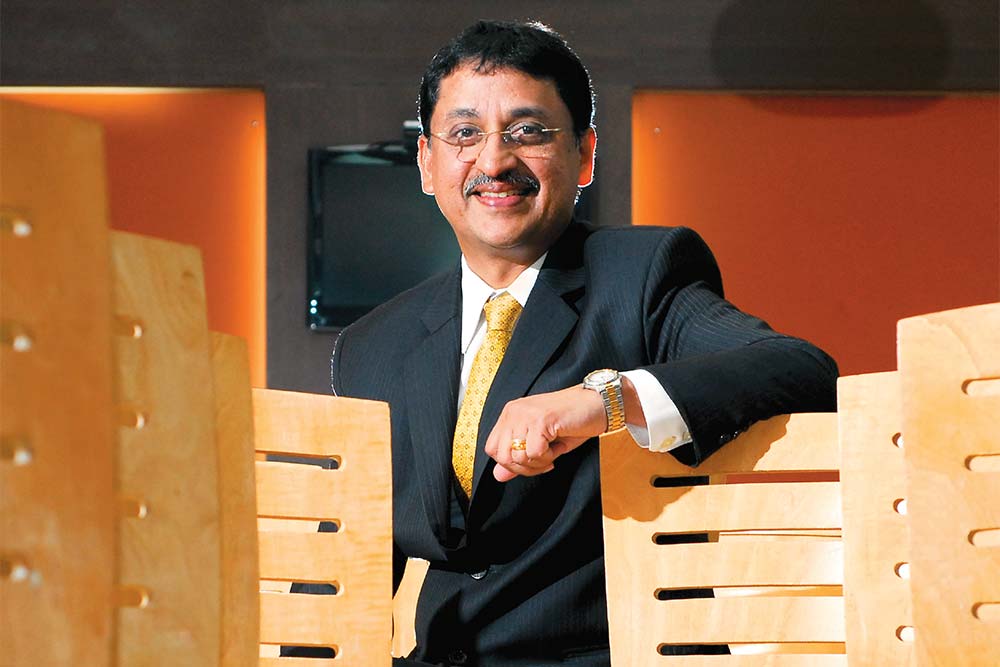Tell us about the industry in which you operate.
The healthcare industry in India is pegged at about $60 billion currently and it is expected to touch $220 billion in 2020. The important thing to think about is, how is this expenditure going to be financed? Can the government fund this? Maybe it can for those who are economically disadvantaged but definitely not for all citizens. Therefore, you have a choice of funding this from your savings, a big financial risk, or by transferring this risk to a health insurance company. Today, 80% of spends come from savings and health insurance has a 4% penetration. But the industry looks set to grow at a fast pace in future.
What problems will India face in terms of health?
The average age in India is significantly lower than most developing countries and developed countries, which is an asset. But this could actually become a liability 40 to 50 years from now, for two reasons.
The first I’ve already mentioned. Who will fund the healthcare requirements of the people of India? The second is the issue of elderly care, which is negligible at the moment. Also, there is a big increase in the incidence of lifestyle diseases like diabetes and hypertension. These can lead to long-term issues for the country and could even jeopardise future growth.
Why is health insurance penetration so low?
If 1.1 billion is the total population, the middle class is about 400 million. Of this, only 10% of the middle class has insurance, which is a poor 4% when worked out on the total population. But, the good news is that it’s growing.
I think there are several reasons for why it is low. One, the average Indian consumer is living in denial that “nothing will happen to me.” Two, the average Indian consumer doesn’t believe he needs to buy health insurance in advance. He thinks of health insurance if there is a problem. Three, the performance of the health insurance industry in the last 15 years has not been brilliant from a customer service point of view. There is also the challenge of cost-effective distribution.
What’s your opinion on a very low-priced healthcare insurance, something like ₹1 or ₹10 a day?
Below the poverty line, there is a role for private sector insurance companies in terms of administering the insurance scheme and we do that through the Rashtriya Swasthya Bima Yojna, which is there in almost every state. Above the poverty line there are different segments. There are a significant number of people in the bracket just above the poverty line who also need insurance, and for them what we need to design is very low price products that still provide reasonable coverage.
We are strong in product design. And, if you give me access through a public sector bank or a cooperative bank, I can reach the masses virtually overnight.
Why are you not allowed to sell policies through the post office?
We are allowed to go through the post offices but the people who man them have a certain core job to do. It’s time consuming to train them to sell private health insurance. The strike rate and the opportunity to conclude a sale in the banking side are much better than a post office.
How do you think the internet will reshape the industry?
The internet certainly helps but it’s unlikely to be a significant channel for any insurance company in the next four or five years. But it could change in the 10-20 year period because today’s young population, in the 15-22 year age group, will be the buyers of insurance products via the net later.
How big do you think the Indian health insurance industry is going to be?
It is $3 billion (₹15,000 crore) now. Health insurance is growing at 20% and will reach around $13 billion by 2020. So, it is growing at a faster rate than the healthcare industry but, even with that growth, you are talking about a funding gap of over $200 billion. The gap in rupees crore is so significant that the Indian government will have a serious issue in terms of financing healthcare.
What’s your market share?
Now, in our fourth year, we expect to finish with a total business of ₹450 crore to ₹500 crore. Over the next five years, we will grow the health insurance business at a compounded rate of 30-40% per annum.
What were the strategic choices made by the company?
Historically, health insurance in this country has been a loss-making proposition. Claims ratios are anywhere between 100% and 140%. So, we focus on profitable group accounts that understand our value proposition and, predominantly, we are focusing on retail insurance.
What’s your competitive advantage?
It is designing products, pricing them right, and then servicing the claims. That is because we can leverage our parentage of the largest composite health insurer globally (Munich Health) and of Apollo Hospitals, one of Asia’s largest healthcare providers. We know healthcare and health insurance, and this gives us the competitve edge.
Is insurance portability a good move?
Insurance portability is the right way forward. We had introduced partial portability from day one, almost three years before it became a mandatory requirement. We believe that it’s the right thing from the customer’s point view.
Who’s your competition?
Our competition is mainly other specialist health insurance companies, both private and public, general insurance companies and life insurance companies.
Is the market crowded?
No. I think between life, non-life, and health insurance specialists the number of players is over 50. In the developed markets there are hundreds of players.
What are your substitutes within the health insurance industry?
There is no viable substitute for health insurance. The only option that can be explored is depleting your life savings.











